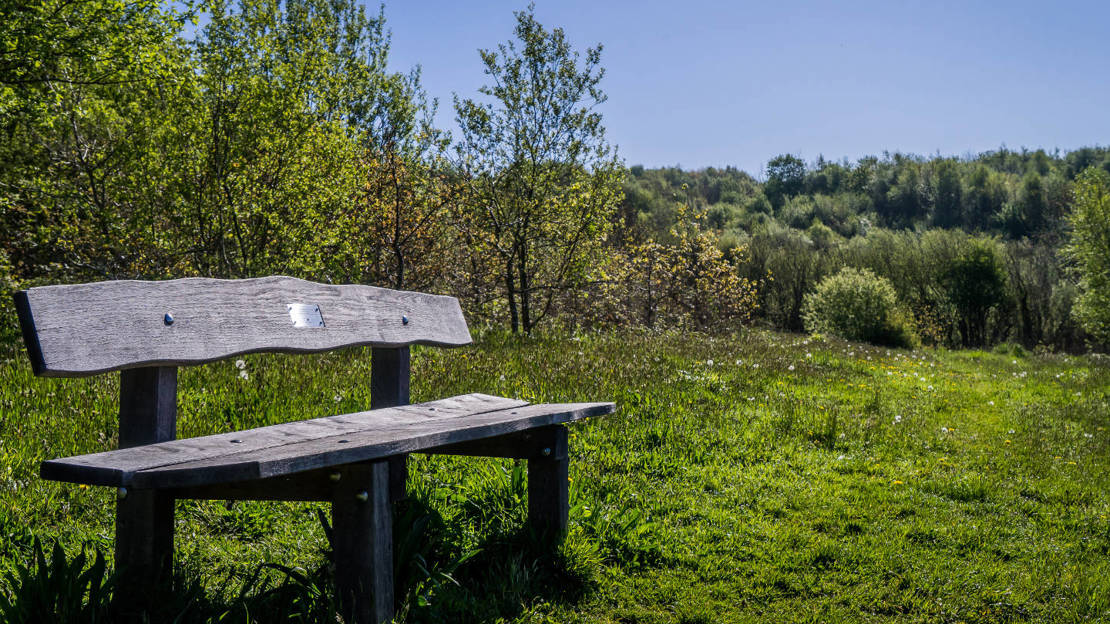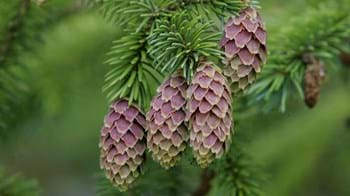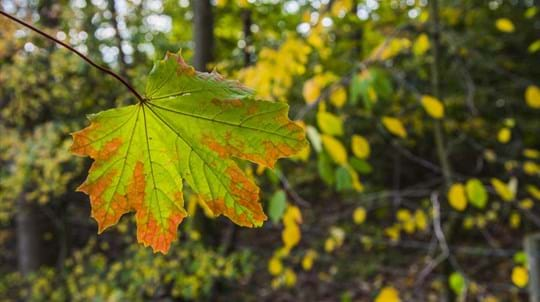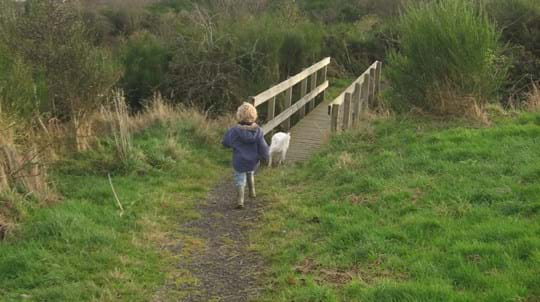
Moncreiffe Hill
Perth

Woodland Trust wood group
- Moncreiffe Hill
- Moncreiffe North ext.
132.03 ha (326.25 acres)
NO138197
Explorer 369
OS Landranger 58
Mixed conifer and broadleaf woodland cloaks the majestic Moncreiffe Hill, offering panoramic views stretching to Fife and the Lomond Hills. The wood is home to red squirrel and its diverse habitats support a fascinating range of plant life. With two Iron Age hill forts to explore, there’s plenty of historic interest too.
Features
- Parking at site
- Public access
- Autumn colour
- Waymarked walk
How to get to Moncreiffe Hill
This 132-hectare (326-acre) woodland is located between Perth and the village of Bridge of Earn, just east of the main M90 and A912 roads.
From Perth, head south on the A912 (Edinburgh Road) and take a left onto Rhynd Road just before the M90 motorway turn-off. Continue for roughly 1.6km (1 mile) to the car park on the right.
From the A912 just north of Bridge of Earn, follow the minor road (Rhynd Road) that runs east near the bridge over the River Earn. Carry on for roughly 1.8km (1 mile), then turn up a track to the left, signposted for Moncreiffe Hill. The car park is 750 metres along the track.
The nearest train station is Perth, which is 4.9 km (3 miles) away.
Visit National Rail for more information.
There is a regular service from Perth and Bridge of Earn. The southern entrance to Moncreiffe Hill is just 1.6km (1 mile) north of Bridge of Earn.
Visit Traveline for more information.
Facilities and access
There are two main entrances with information boards. The northern Tay car park, which has the most spaces, is best for access to the sculpture trail and hill forts. The southern entrance is near Bridge of Earn. From both entrances there is a steep climb to the top of the hill (steeper from the south).
The site has over 14km (8.7 miles) of path, mainly on wide, stone-surfaced forest tracks, with loops of different lengths and grades. Many of the routes are part of the Core Path Network. Some unsurfaced paths can be muddy and steep in places, especially the path to Moredun Fort.
The minor road that encircles much of the wood is quiet and suitable for careful cycling and walking, but has no pavement and no bus service. Horse riders can also enjoy the site.
There are two car parks, both of which are on the Rhynd Road. The car park on the north side has space for around 25 cars. The car park on the south side has space for around 10 cars but with limited turning area. Both are free to use.
The nearest public toilets with disabled access are in Perth at Marshall Place, Ropemakers Close and Perth Bus Station on Leonard Street.
Wildlife and habitats
Animals
Moncreiffe Hill is full of wildlife. Look out for red squirrels scampering through the branches and roe deer hiding among the trees. There’s plenty of birdlife too. In the early months of the year, you may hear the resonant drumming of the great spotted woodpecker or the mewling call of a buzzard as it soars and swoops overhead – it’s the prime time for their territorial display flights.
Trees, plants and fungi
Moncreiffe Hill is a wood of great variety, from Douglas firs towering among the ash and sycamore on the lower reaches, to solitary veteran oaks clinging to ridge tops.
Habitats
Moncreiffe Hill is a long-established wood that started out as a plantation. It was planted somewhere between 1750 and 1860 but still has scattered remnants of ancient woodland, including veteran trees which date back to the 19th century. There are some patches of acid grassland and heathland on site.
We acquired the site in 1988 and have been restoring it ever since. We planted new native woodland in 2011 with the help of the local community and have planted fruit trees on the lower slopes.
History of Moncreiffe Hill
In AD 728, the hill was the site of a battle between two Pict warlords, Angus and Alpin, who were fighting for control of the Pictish throne. While no visible evidence of Moredun Fort remains, excavations have revealed that the structure of Moredun suggests the hill had special significance as a Pictish royal centre.
A 1783 map of the area shows that the hill was sparsely wooded at the top, but by the end of the 19th century, woods planted by the Moncreiffe Estate covered the entire hill and it went on the be managed as a commercial plantation.
Archaeology
Moncreiffe Hill has two Iron Age hillforts, which are designated as Scheduled Ancient Monuments. Moredun Top hillfort is the larger and encircles the summit of the hill.
A line of several ramparts can be traced around the outcrop, with suggestions of an annexe on a terrace at the northern flank. Only this annexe is within our site. Moncreiffe hillfort sits above the crags on the southern rim. The ramparts are well preserved on the east edge with a clearly defined entrance.

Dedicate at this wood
This wood is one of more than 50 across the UK where it's possible to dedicate trees, benches or larger areas of woodland. Mark a special occasion or celebrate the life of a loved one with a meaningful gesture that lasts.
Choose a dedicationThings to do in Moncreiffe Hill
Walks
There are five waymarked trails, ranging from the green 3km (1.9 miles) walk to the more challenging red 8.4km (5.2 miles) route.
If you follow the white or green trails you will discover a variety of sculptures. Students from Dundee’s Duncan of Jordanstone College of Art & Design regularly add interesting sculptures to the trails, so there’s always something new to discover. The trails were made possible by the Gannochy Trust, Perth and Kinross Countryside Trust, and Scottish Rural Development Programme funding through Forestry Commission Scotland.

A lasting legacy
This wood is just one of many to have been protected by gifts in wills, securing it for generations to come. Your legacy gift could also make a real difference to woods, trees and wildlife.
Learn what your gift could mean












































